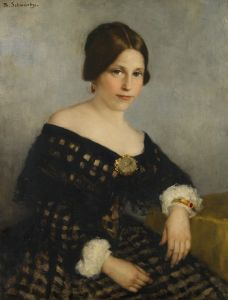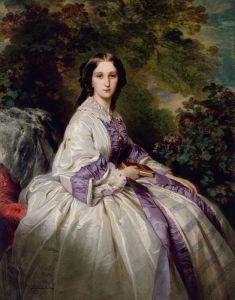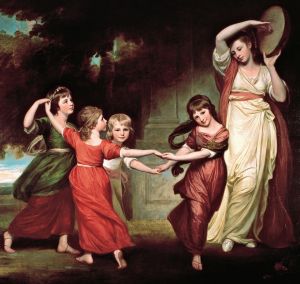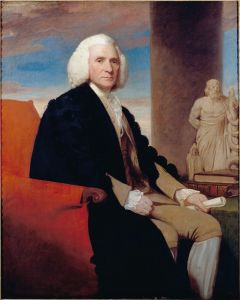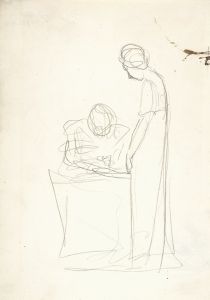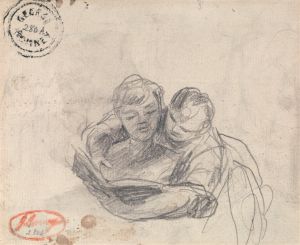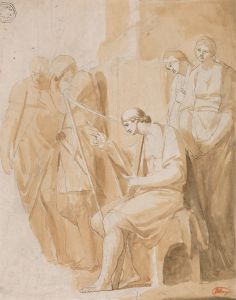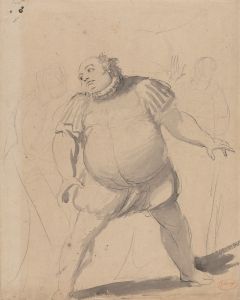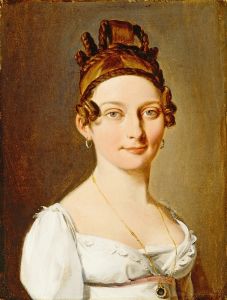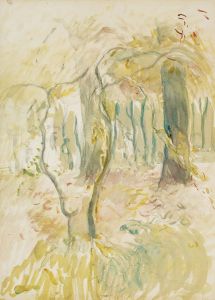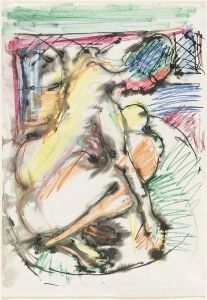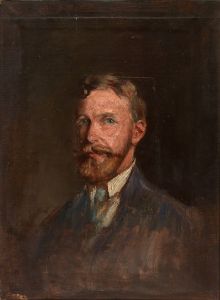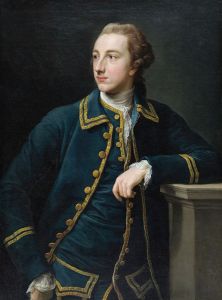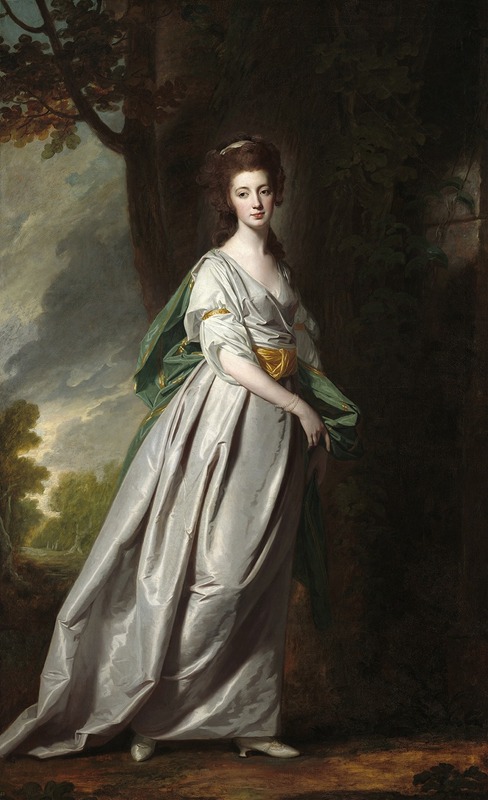
Mrs. Thomas Scott Jackson
A hand-painted replica of George Romney’s masterpiece Mrs. Thomas Scott Jackson, meticulously crafted by professional artists to capture the true essence of the original. Each piece is created with museum-quality canvas and rare mineral pigments, carefully painted by experienced artists with delicate brushstrokes and rich, layered colors to perfectly recreate the texture of the original artwork. Unlike machine-printed reproductions, this hand-painted version brings the painting to life, infused with the artist’s emotions and skill in every stroke. Whether for personal collection or home decoration, it instantly elevates the artistic atmosphere of any space.
George Romney was a prominent English portrait painter in the late 18th century, known for his vivid and insightful depictions of the British upper class. One of his works, "Mrs. Thomas Scott Jackson," exemplifies his skill in capturing the elegance and personality of his subjects. This painting is a testament to Romney's ability to convey the grace and sophistication of the era's elite women.
George Romney was born in 1734 in Dalton-in-Furness, Lancashire, England. He rose to prominence in the London art scene during a time when portrait painting was in high demand. His contemporaries included other renowned artists such as Sir Joshua Reynolds and Thomas Gainsborough. Romney's style was characterized by a keen attention to detail, a delicate use of color, and an ability to capture the character and mood of his sitters.
The subject of this particular painting, Mrs. Thomas Scott Jackson, was a member of the British gentry. While specific biographical details about Mrs. Jackson are limited, it is known that she was married to Thomas Scott Jackson, a figure of some standing during that period. Romney's clientele often included individuals from the upper echelons of society, and his portraits were sought after for their elegance and the flattering yet realistic portrayal of his subjects.
In "Mrs. Thomas Scott Jackson," Romney employs his signature style to depict the sitter with grace and poise. The painting likely features Mrs. Jackson in fashionable attire of the time, reflecting the trends and styles of late 18th-century England. Romney's use of light and shadow would have been employed to highlight the textures of the fabrics and the delicate features of Mrs. Jackson's face, bringing a sense of life and immediacy to the portrait.
Romney's portraits are often noted for their psychological depth, and it is likely that "Mrs. Thomas Scott Jackson" is no exception. Through subtle expressions and posture, Romney would have aimed to convey the personality and social standing of Mrs. Jackson, offering viewers a glimpse into her character and the world she inhabited.
The painting of Mrs. Thomas Scott Jackson is part of Romney's extensive body of work, which includes numerous portraits of notable figures of his time. His ability to capture the essence of his subjects made him one of the most popular portraitists of his era. Romney's works are celebrated for their artistic merit and their contribution to the documentation of British society in the 18th century.
Today, George Romney's paintings, including "Mrs. Thomas Scott Jackson," are held in high regard and can be found in various art collections and museums. They continue to be studied and admired for their technical skill, beauty, and historical significance. Romney's legacy as a master portraitist endures, and his works remain a valuable window into the past, offering insights into the people and culture of his time.





